This boneless prime rib roast is crusted with an herb and garlic rub for a tender, juicy, and perfectly cooked holiday dinner. With easy-to-follow step-by-step instructions, learn how to choose the perfect rib roast, how long to cook it, and how much you need per person. This recipe also includes a delicious rib rub that makes this a must-have on your Christmas dinner menu! Beginner-friendly!
Since this is an involved recipe, please read the entire post for tips, important details, and recipe notes that may not have been included in this recipe card.
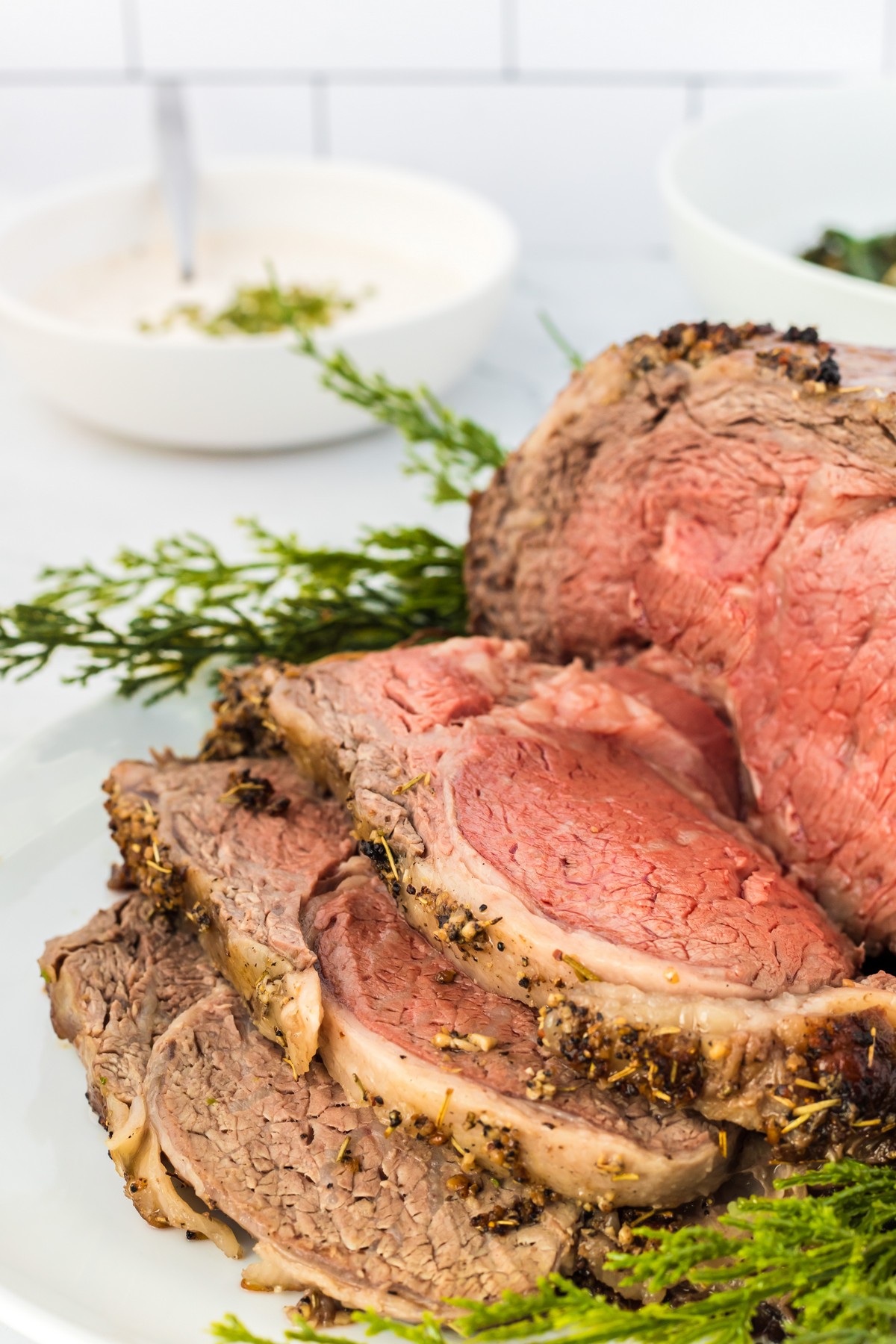
Like any other large cut of meat, cooking a rib roast can be intimidating. It’s expensive and often purchased in larger portions, but this is actually very simple and easy to follow. The ingredients are easy to find and probably already in your spice cabinet. With the info below, even the most beginner cook can pull off this recipe!
Table of contents
What is prime rib?
Prime rib is a large cut of meat, typically weighing in at about 10-12 pounds. This cut of beef rests along the back of the cow’s ribs and has been cut from the 6th through 12th ribs near the muscle.
Considered the king cut of beef, it’s delicious, tender, and requires only a little seasoning to bring out its natural flavors. Because of its quality, it’s also one of the more expensive cuts of beef.
This cut of meat can be purchased from a butcher or your local grocer in the meat case. You can even have the butcher debone the rib roast, so you don’t have to do it when you get home. Make sure you keep the boned roast tied with kitchen twine.
How to choose a rib roast
Your butcher will be a great help with this part! When you are choosing a rib roast, look for one with a bright, milky white fat cap on top and even marbling throughout.
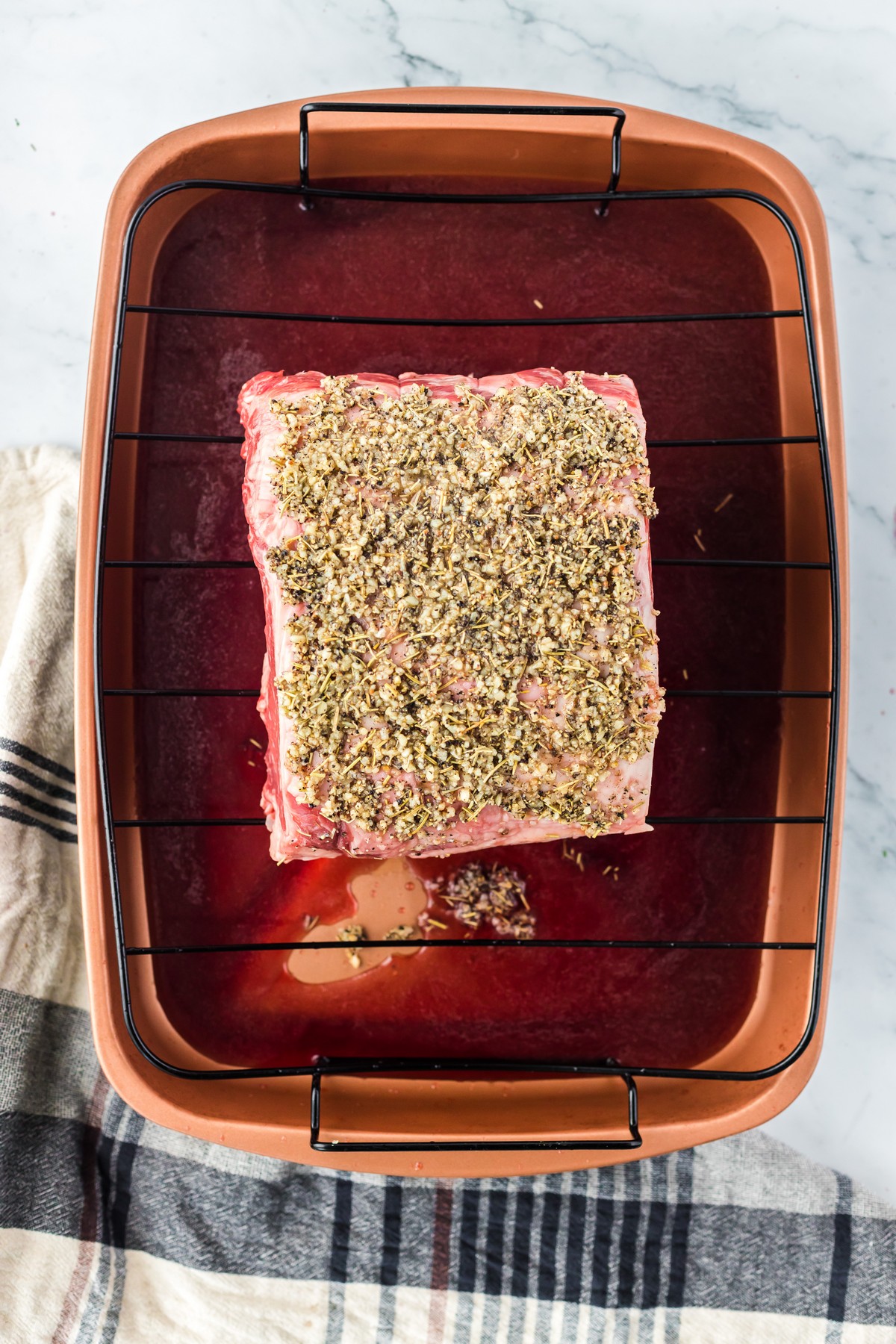
This isn’t the time to go lean! Since this roast will be slowly roasted, we want a lot of good, healthy fat distribution throughout the roast so it stays nice and tender.
Price
This is one of the more expensive cuts, which is what makes it so special for celebrations and holidays. Generally, expect to spend around $10-12 per pound. I’ve found that Costco and Sam’s have the lowest prices for larger pieces, but you may find higher quality at your local butcher shop.
How much prime rib per person
Much like with a brisket or pork shoulder, estimating for extra is better than not having enough. I estimate for one pound per person. This way, I am sure I have enough and also have plenty of leftovers for later.
Also, keep in mind that different portions of the roast will be cooked more and less depending on where they were sliced.
How to Cook Prime Rib in the Oven
Step 1: Prepare the Roast
Removing your roast from the refrigerator and allowing it to come to room temperature is another way to ensure a tender end result.
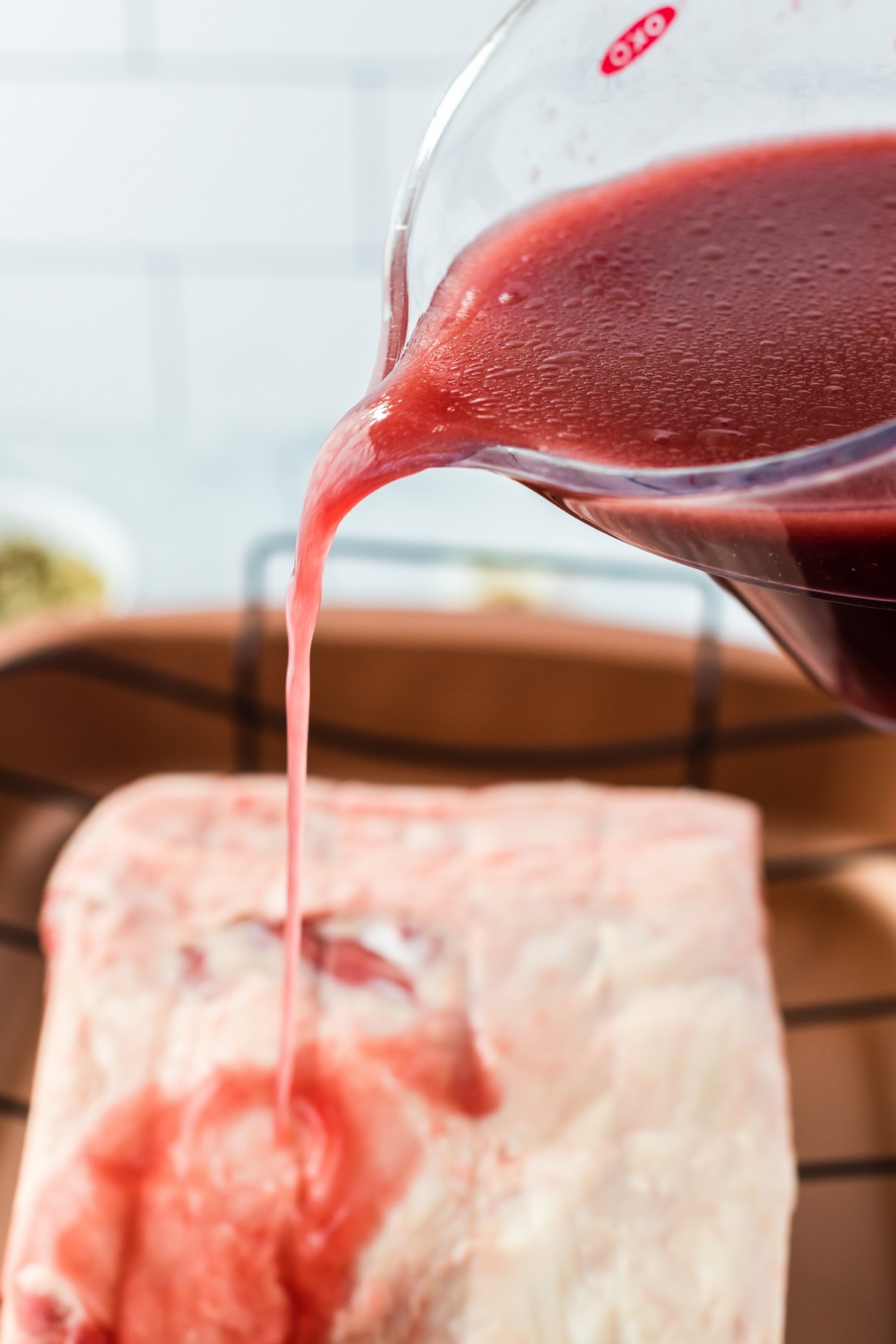
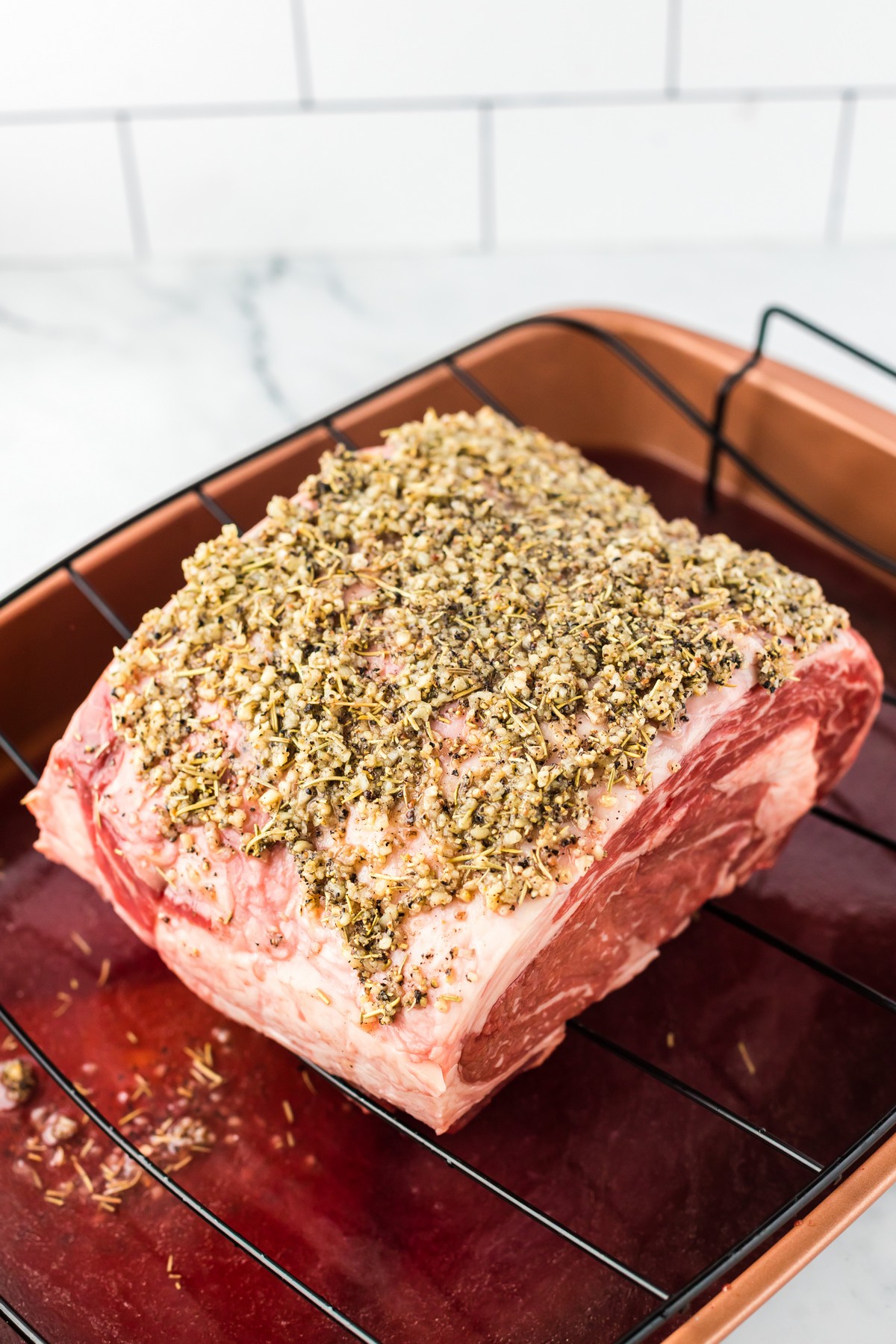
Prepare the herb rub. Pour the wine mixture over the roast, then season the roast with the rub ingredients.
Step 2: Cook the Roast
Cook the roast according to the chart below. An in-oven meat thermometer will greatly help you determine just the right temperature for desired doneness.
Step 3: Rest, Carve, and Serve
Just before the roast reaches the ideal internal temp, remove it from the oven and allow the roast to rest for at least 30 minutes before carving. This allows the juices to redistribute throughout the meat for a tender, juicy cut.

Slice the roast against the grain and serve with au jus, horseradish sauce, caramelized onions, and other delicious side dishes.
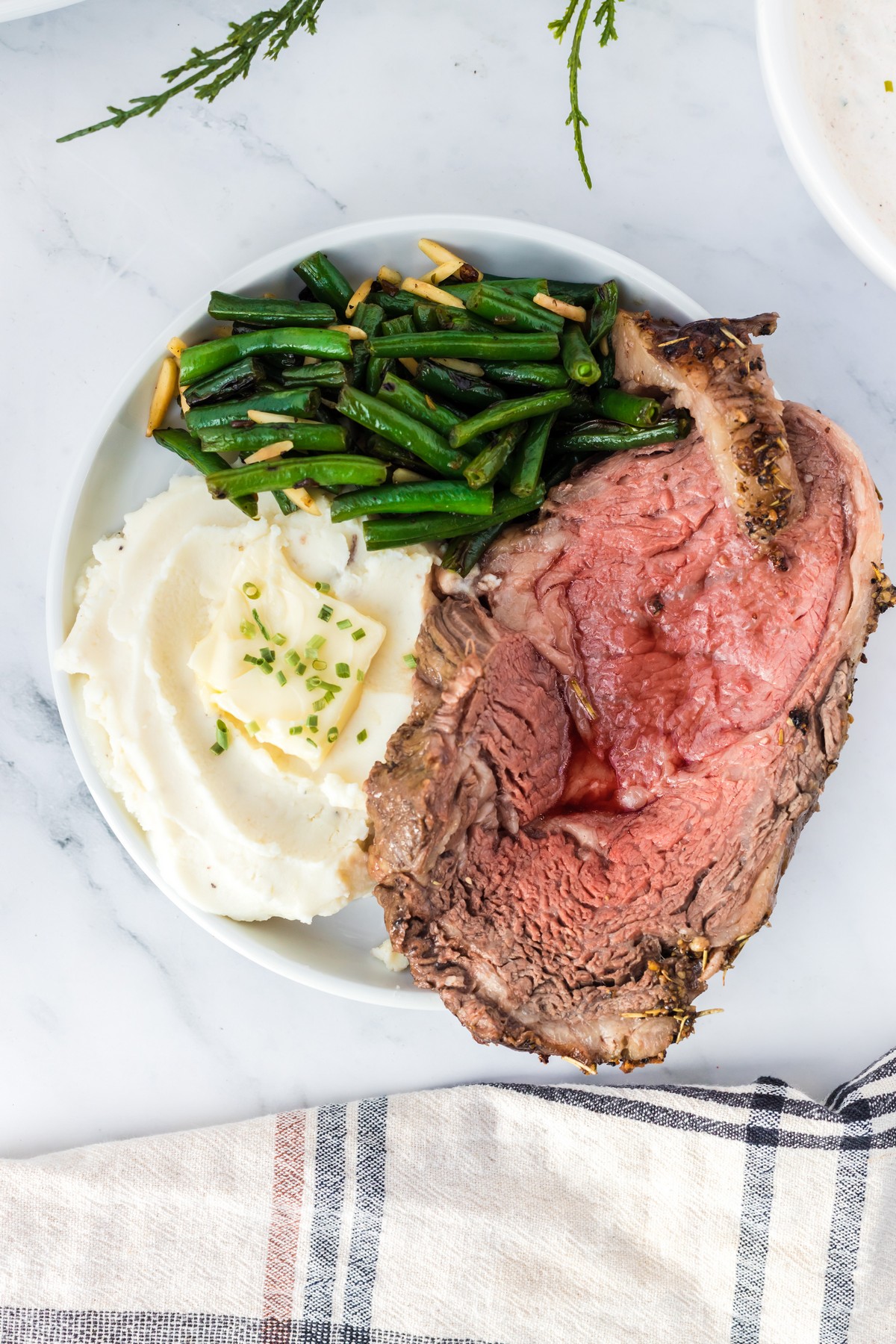
The key to cooking a delicious rib roast relies on two important tools:
- A digital in-oven meat thermometer – This will take the guesswork out of cooking. With a cut of meat this size, you really don’t want to guess your way through until done. You could end up with an overcooked or undercooked roast.
- A roaster with a rack or a disposable roasting pan for easier cleanup – Rib roasts are heavy, so you want a good sturdy roasting pan. If you choose to use an aluminum pan like I did, keep a large baking sheet underneath to stabilize the pan.
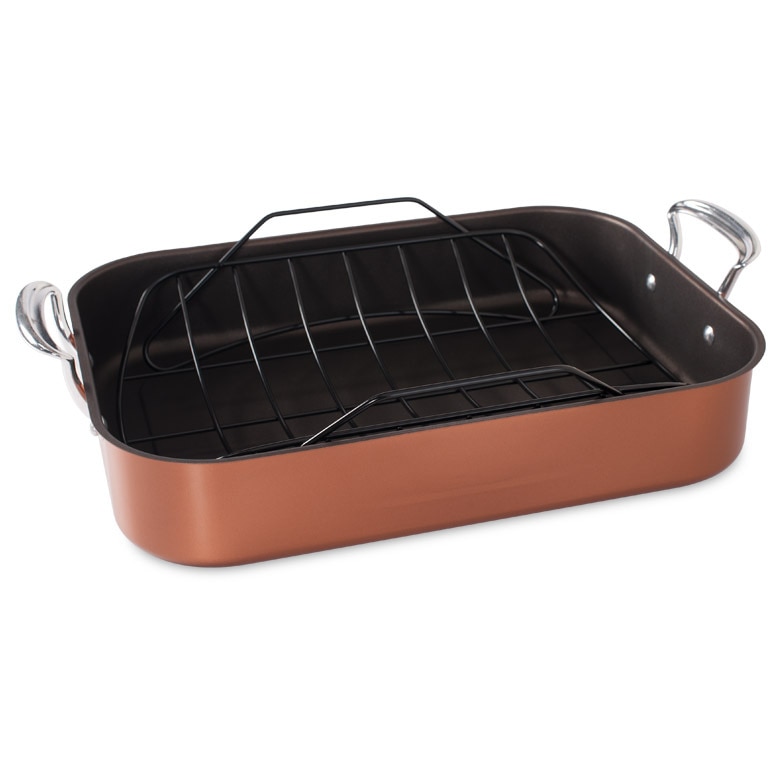
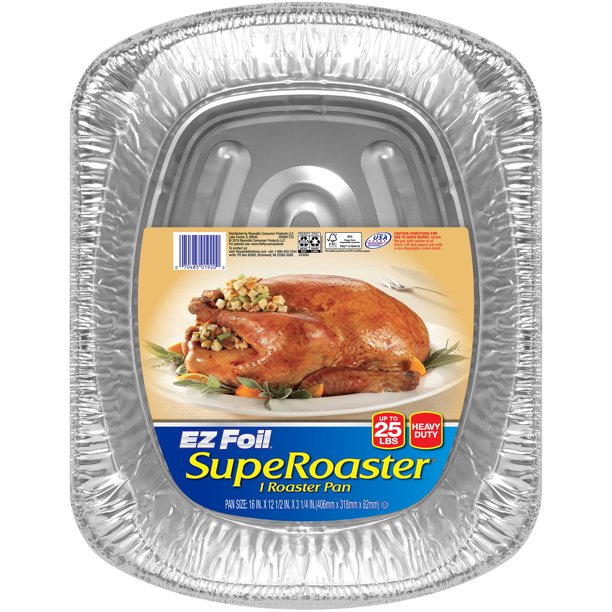
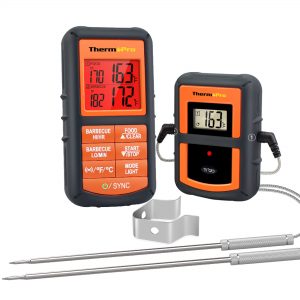
Prime Rib Rub Notes
This recipe calls for a basic rub using a combination of salt and pepper, dried herbs, and wine. If you have another preferred roast rub, feel free to use that instead, and follow the cooking instruction below.
Rub ingredients:
- Kosher salt – Using kosher salt instead of table salt will help create the crispy crust on the outside of the roast. Do not use table salt in place of kosher salt for this recipe.
- Dried herbs – if you wish to use fresh herbs instead of dried, simply use a 3:1 ratio. If you use 1 teaspoon of dried herbs, use 3 teaspoons of the same herb.
- Freshly ground pepper
- Red wine – The red wine addition creates beautiful aromatics and “steams” the roast with added flavor. Use a dry red wine like merlot, cabernet sauvignon, or a blend for best results. Do not use a sweet wine.
How long to cook prime rib
If there’s anything intimidating about this recipe, it’s definitely the cooking. As long as you follow the suggestions in this post, everything should turn out as expected.
NOTE: Everyone has their own preferences of desired doneness when it comes to meat; however, because of the quality and cost of this cut, I strongly advise against cooking to well done. At well done, the meat will have lost most of its natural flavor and will likely be tough, which is considered ruined by many standards. I recommend a medium-rare to medium doneness.
I’ve put together a chart of the cooking time and temperature along with an example of how to calculate the cooking time. I strongly recommend adding an extra hour to the entire preparation time: 30 minutes for resting and 30 minutes as a buffer.
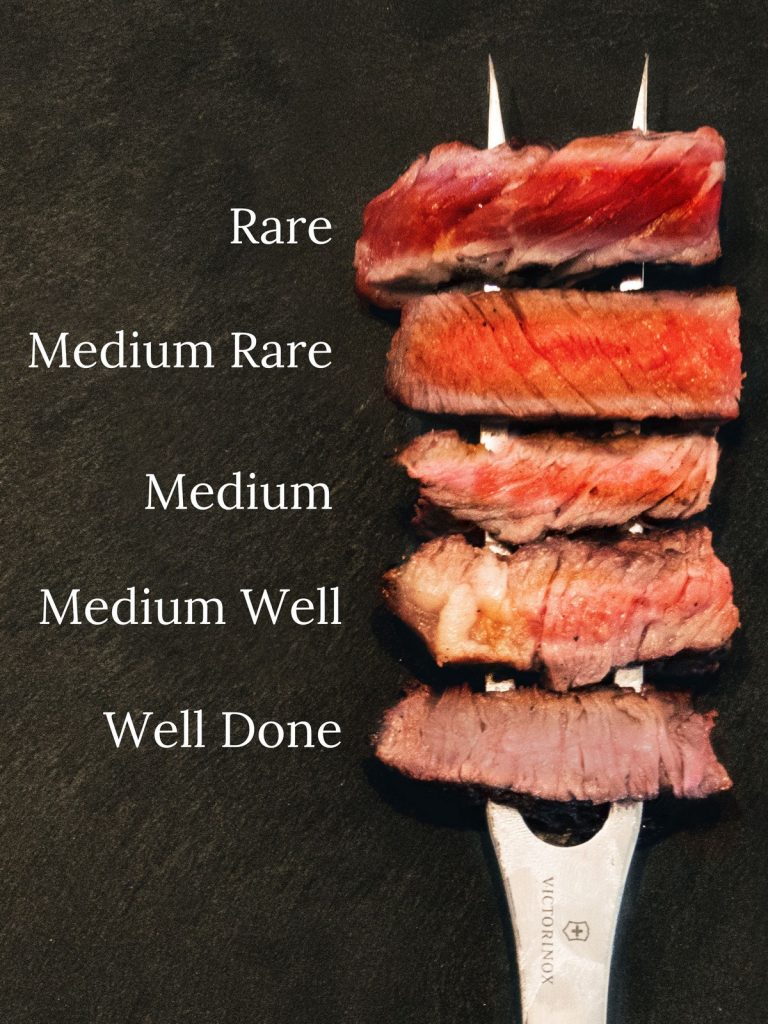
Here’s how to estimate the cooking time for your roast:
- Decide on your desired doneness: rare, medium-rare, medium, medium-well, or well done
- Then, multiply the chart’s cooking time by the weight of your roast.
For example, to cook a 10-pound rib roast to medium-rare:
10 (pound roast) x 17 (minutes per pound) = 170 minutes / 60 minutes = 2.8 hours
In this example, I would recommend rounding the 2.8 hours up to 3 hours to give yourself plenty of time to ensure the roast is done to your preference.
Don’t forget: Since you are using an in-oven meat thermometer, it will be easy to monitor the doneness so you don’t overcook or undercook the meat.
Be sure to remove the roast from the oven about 10-15 degrees before it reaches the desired temperature and allow it to rest for about 30 minutes, covered with aluminum foil. During resting, the temperature will continue to rise as the internal heat continues to cook the roast.
Allowing the meat to rest before slicing relaxes the meat and allows the juices to be evenly distributed.
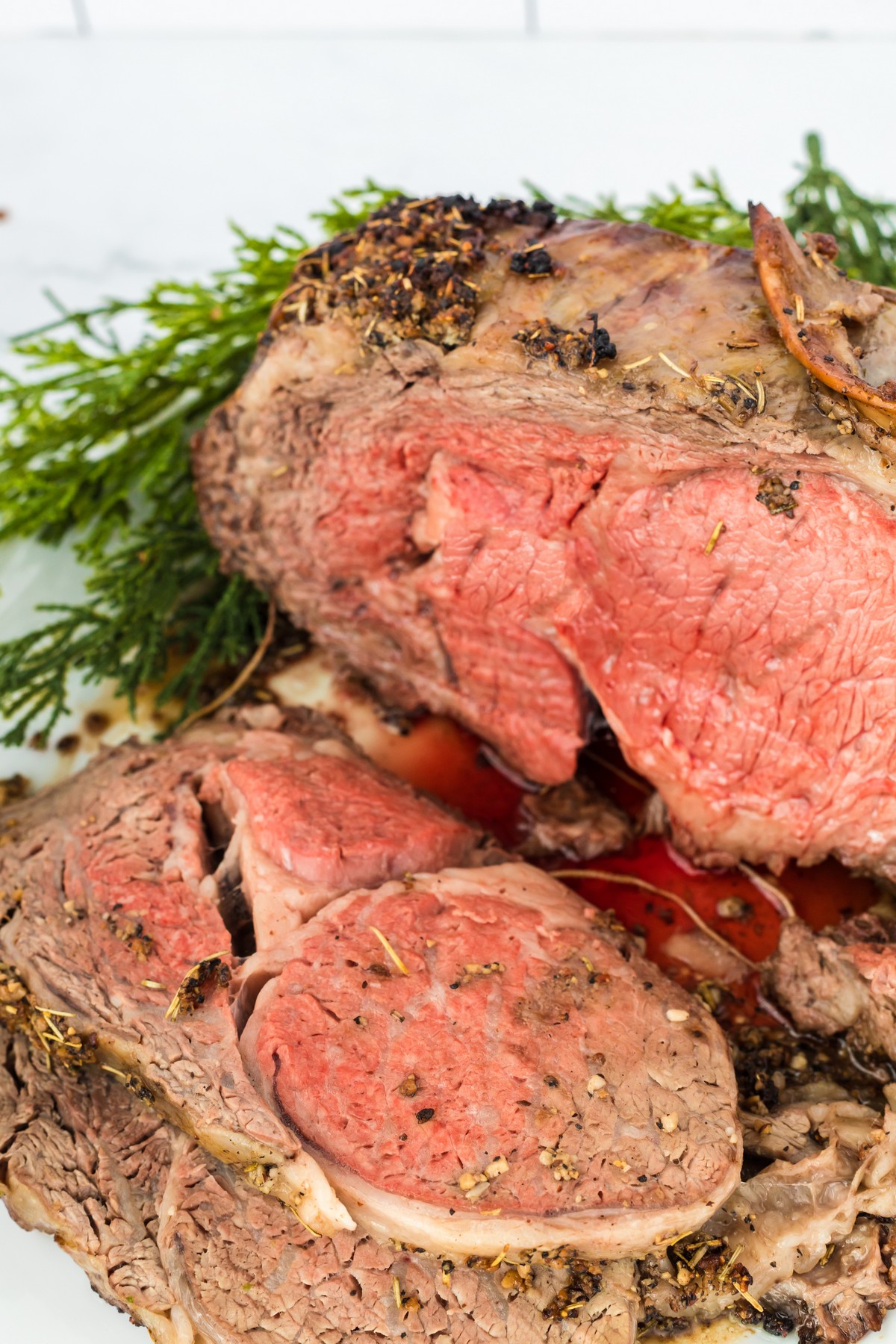
Prime rib cooking temperature chart
| Desired Doneness | Cooking Time (at 350°F) | Internal Temperature |
| Rare (cool red center) | 15-16 minutes per pound | 125° F |
| Medium Rare (warm red center) | 16-17 minutes per pound | 130-135° F |
| Medium (warm pink center) | 18 minutes per pound | 140° F |
| Medium Well (slightly pink center) | 19 minutes per pound | 150° F |
| Well Done (little or no pink) | 20 minutes per pound | 160° F |
What to serve with prime rib
- Mashed potatoes
- Hashbrown casserole
- Baked potatoes
- Sautéed Green Beans
- Green bean casserole
- Horseradish sauce
- Caramelized onions
Tips for the perfect prime rib:
- Use a meat thermometer – Please don’t skip this step! Using an in-oven meat thermometer will make the cooking process much less stressful and fool-proof.
- Don’t overcook! Even after the meat has been removed from the oven, it will continue to cook, so make sure you are using an in-oven thermometer to monitor the temperature. Remove the roast about 10 degrees before it reaches desired doneness.
- Let it rest. As the roast rests, it will continue to rise in temperature. Allow it to rest to continue cooking to desired doneness and allow the juices to redistribute throughout the roast.
- Cut across the grain when carving. That means, look at the way the grain flows through the meat and slice with your knife going perpendicular to the grain.
Leftovers and reheating prime rib
Reheat a rib roast slice slowly in the oven with some juices – at 300 for about 15 minutes.
- Make sandwiches with the leftovers and top with horseradish and caramelized onions.
- Chop this up and serve over a salad with blue cheese and balsamic vinaigrette.
- Stuff in a taco with pickled onions, cotija cheese, and avocado.
- Reheat with other side dishes.
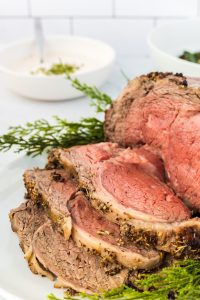
Best Boneless Prime Rib Recipe
Ingredients
- 4 ½ pounds boneless beef rib roast
- 1 ½ cups dry red wine merlot, cabernet sauvignon, or red blend
- 1 ½ cups red wine vinegar
- ½ cup olive oil
- 1 tablespoon kosher salt
- 2 tablespoons black pepper
- 4 cloves garlic minced
- 1 tablespoon rosemary dried
Instructions
- Remove roast from refrigerator and allow to stand until it reaches room temperature, at least 1 hour or more. Preheat the oven to 450°F.
- Remove roast from all packaging and place on a lightly greased rack in a roasting pan. Alternatively, you can use a large disposable aluminum roasting pan.
- Combine salt, pepper, garlic, and rosemary in a small bowl. Set aside.
- Stir together wine, vinegar, and oil. Pour the wine mixture over the roast and into the bottom of the roasting pan. Sprinkle the herb mixture evenly over the top of the roast.
- Insert an oven-safe thermometer into the thickest part of the roast. Insert the probe from the side until the tip of the probe reaches the center of the roast (approximately).
- Place the roast in the 450°F preheated oven for approximately 15-20 minutes, or until the top of the roast forms a dark brown crust but is not burned.
- After the roast is seared, reduce the oven temperature to 350°F and continue to roast until the meat thermometer registers at 125°F or to the desired temperature of doneness. (please see notes)
- Remove roast from the oven, cover with aluminum foil and let stand for 20-30 minutes before slicing. As the roast stands, the internal temperature will continue to rise. Keep this in mind as you choose your desired doneness.
- Carve by slicing against the grain. Serve with au jus, horseradish sauce, and caramelized onions.

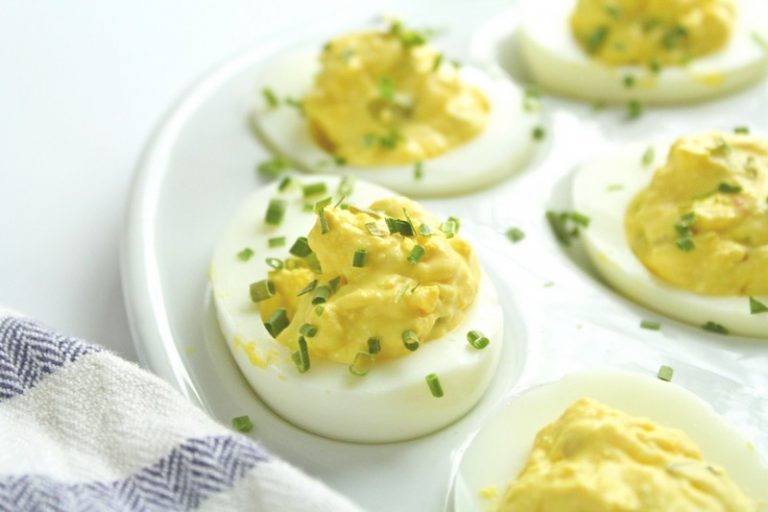
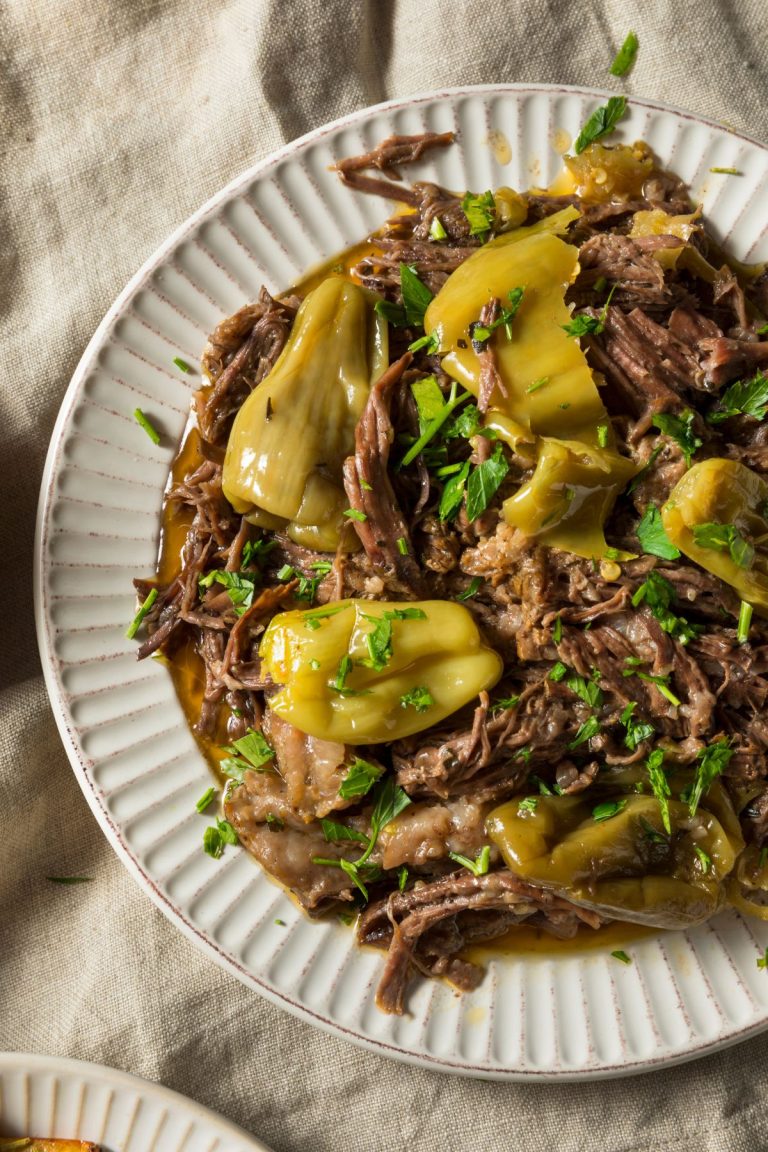
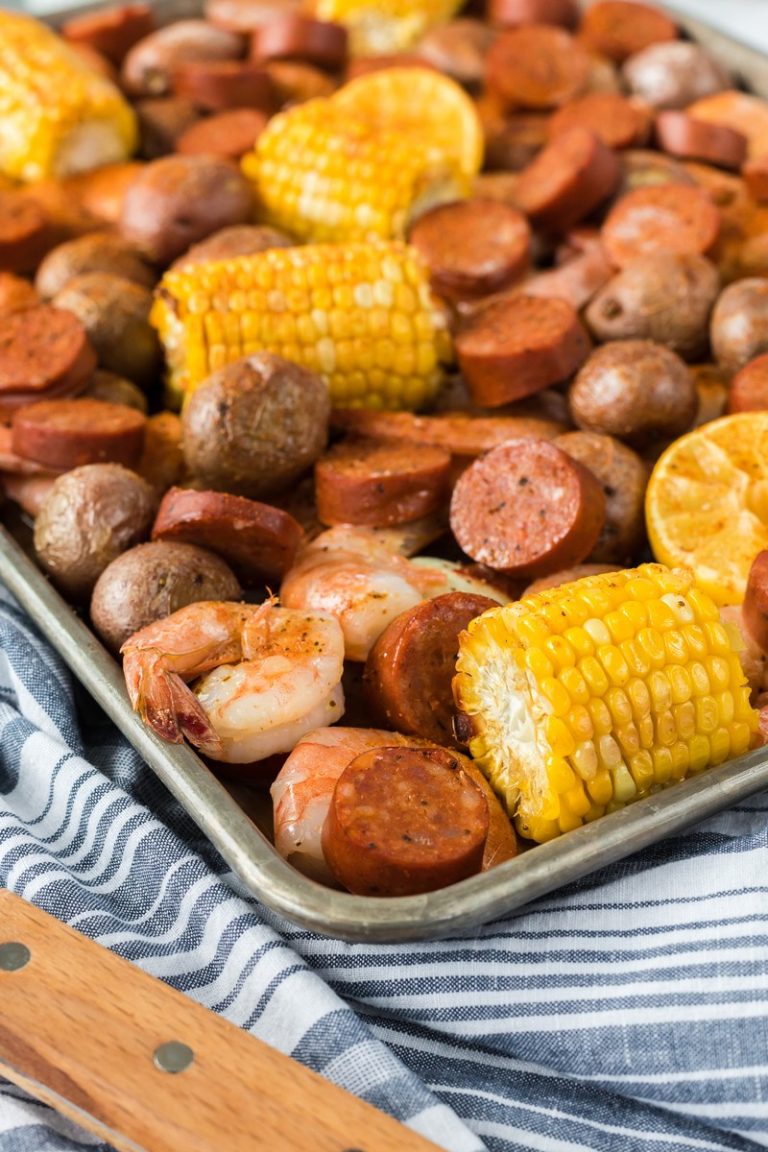
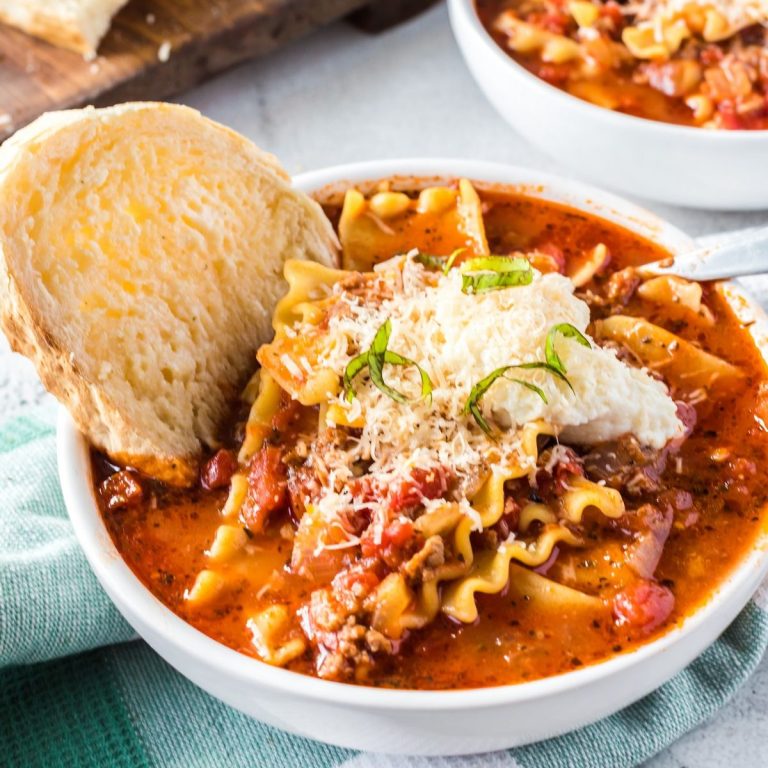
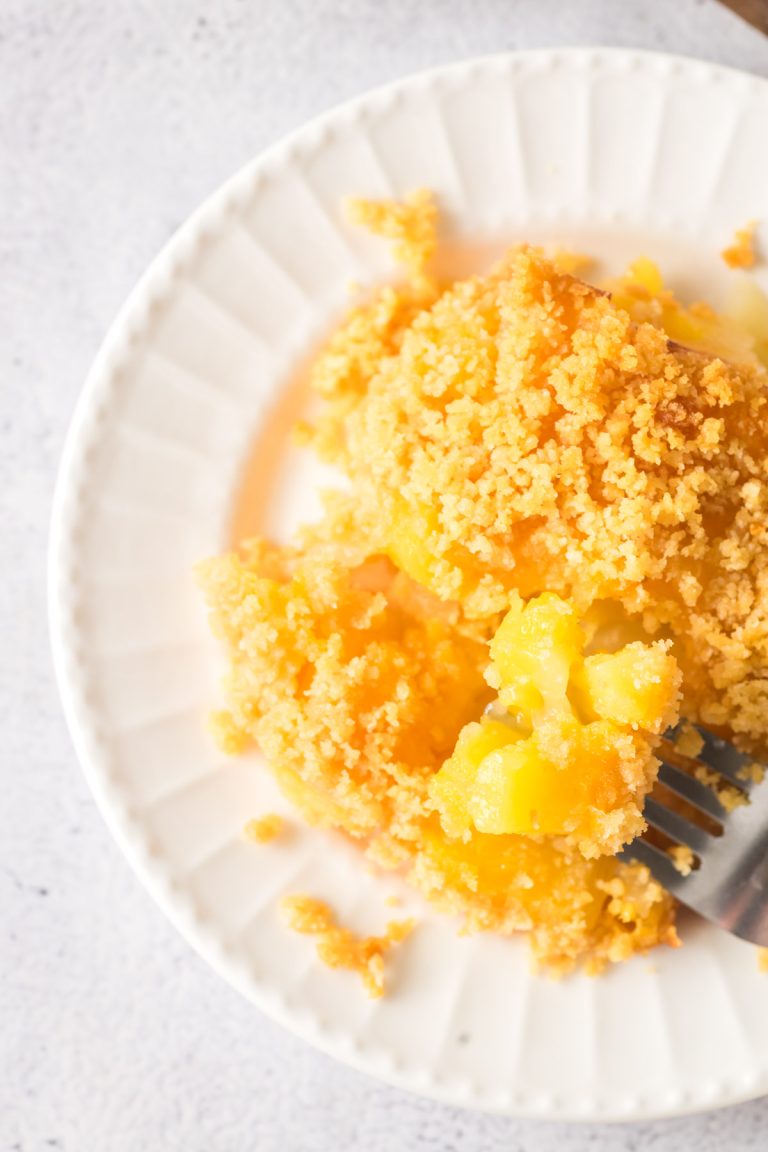
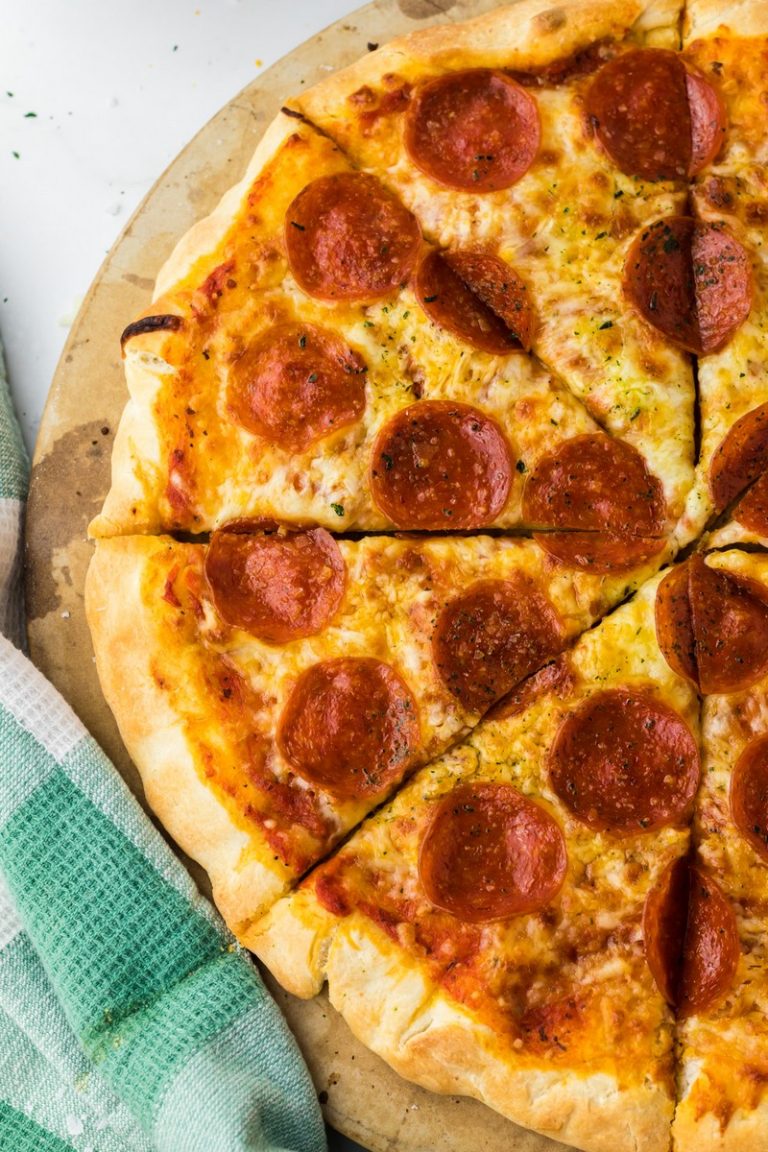
6 Comments